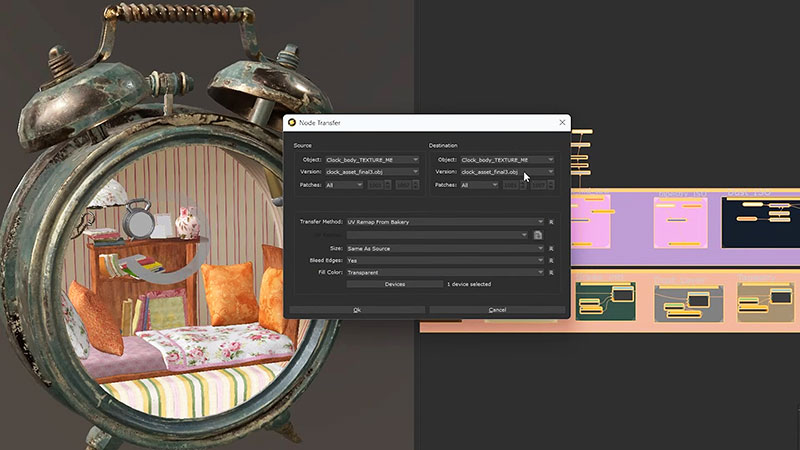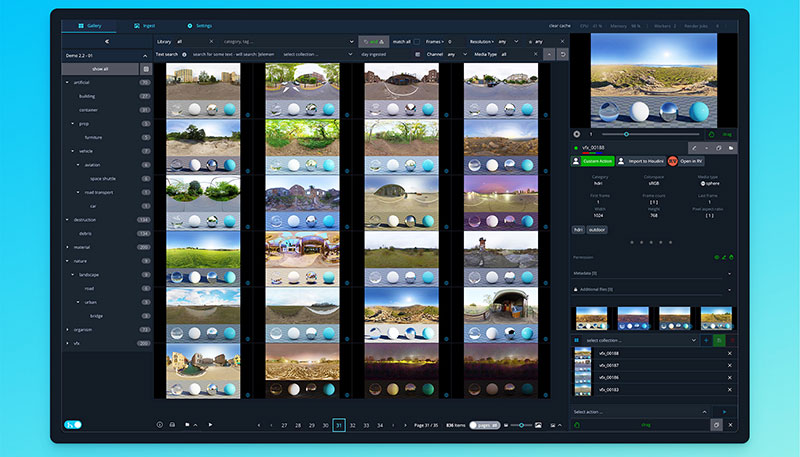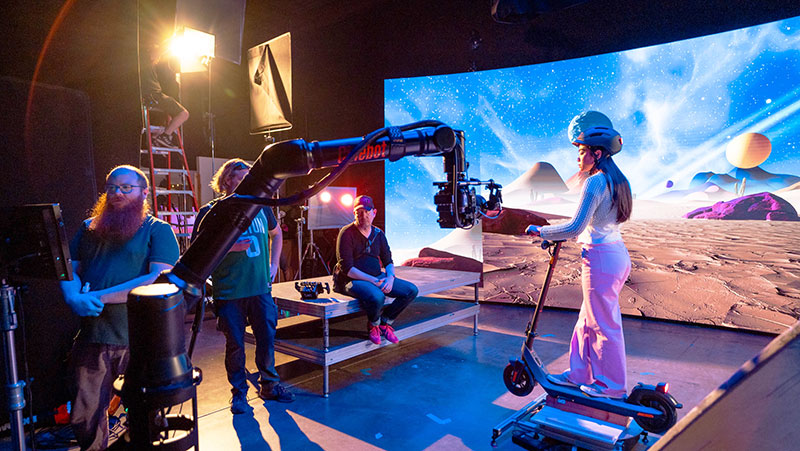Das Element asset library software version 2.1 has new video playback controls, hierarchy tree customisation for libraries, faster set-up processes and simpler element migration.
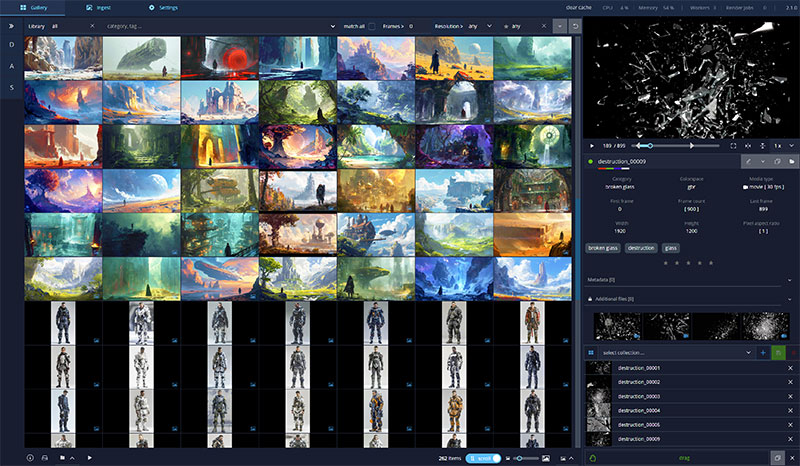
Asset management.
Das Element asset library software is now released in version 2.1 with new video playback controls, hierarchy tree customisation for libraries, faster set-up processes and simpler element migration.
Das Element is built and designed to meet the requirements of visual effects and animation studios. Its features and functionality are based on its developers’ years of experience in building and maintaining asset libraries. Its tools work completely offline, which makes it suitable for the air-gapped environments with tight security measures often used for feature films and TV series.
Flexible and configurable, it can be used in many different use cases from VFX work for movies, to fast paced commercial productions, and can also be adapted to projects like games or architectural visualization.
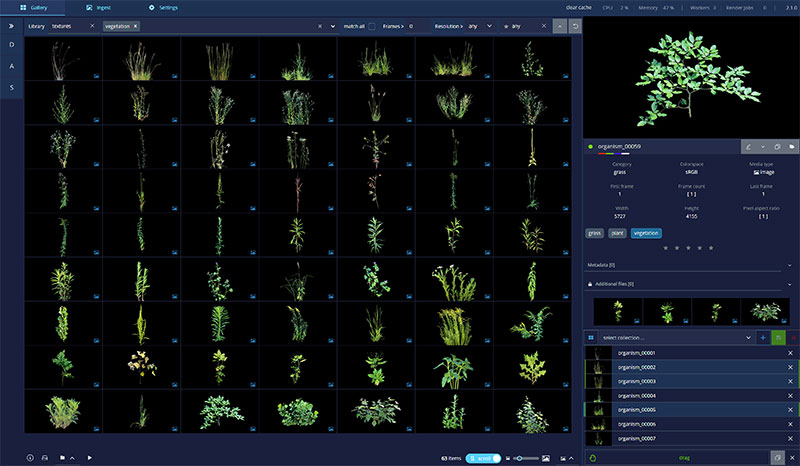
Vegetation library.
The video player controls in Das Element have been updated and refined to improve the review and validation process for elements. Users can now precisely define a playback range when they need to review a short segment of a video clip or sequence, over and over in a loop. Also, stepping through a sequence frame by frame is now possible, along with dynamic scrubbing of the timeline.
Das Element’s users have indicated that, in the long run, the initial setup stage is critical for well-organised asset management, controlling where and how they save their data. A range of setup presets for various types of asset libraries is now available for users to choose from to suit different scenarios. They can keep an existing structure or re-organise all files.
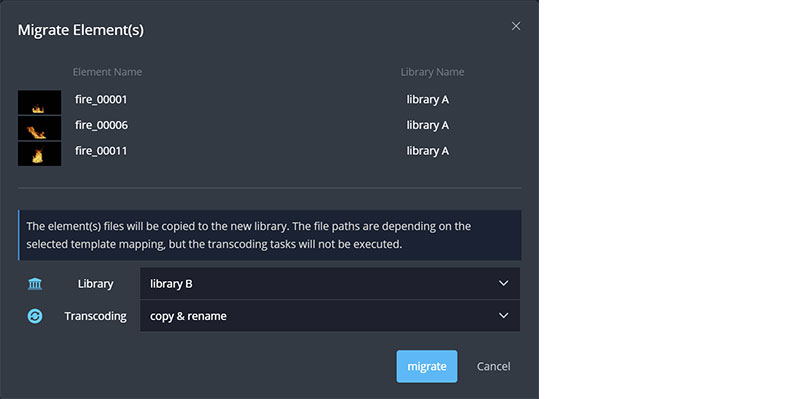
Migrating elements between libraries.
Related to setup is handling projects as they come to an end. Where and how to save the assets for use in upcoming shows is often an issue. Das Element’s new migration features make moving assets between libraries faster and easier. They enable studios to create sub-libraries from the main library, or move assets from a project-based library back into the pool of globally shared assets.
Searching and finding assets is important for efficient creative workflows. Different types of libraries, such as textures and practical elements as well as 3D assets, not only require different structures but also need to be tailored to the needs and requirements of each workflow. For that reason, the new version supports custom hierarchy tree overwrites at a per-library level and allows direct searches across all assets and libraries.
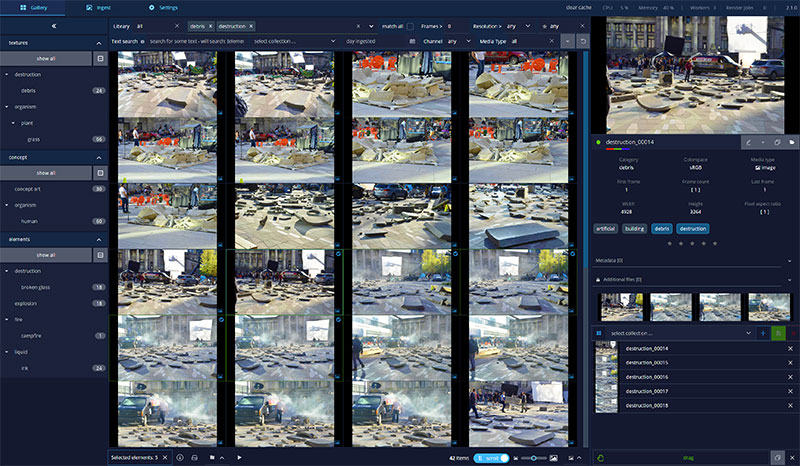
Sorting and tagging set reference.
Numerous other enhancements have been made to Das Element. Users can now use what the developers call path values tokens, which serve as tags or metadata for better organization and retrieval of elements. Finding elements without tags and sorting them by the number of tags is now a simple one-step process. Plus, the tags are now clickable, allowing users to quickly add them to filters and refine their searches with a single click.
For Houdini users, the new path notation ‘$F’ facilitates smoother, more intuitive workflows. The installer file size is now 50% smaller, and n the ingest view settings, users can set custom previews for elements more easily, giving a more personalised, efficient asset management experience. www.das-element.com








